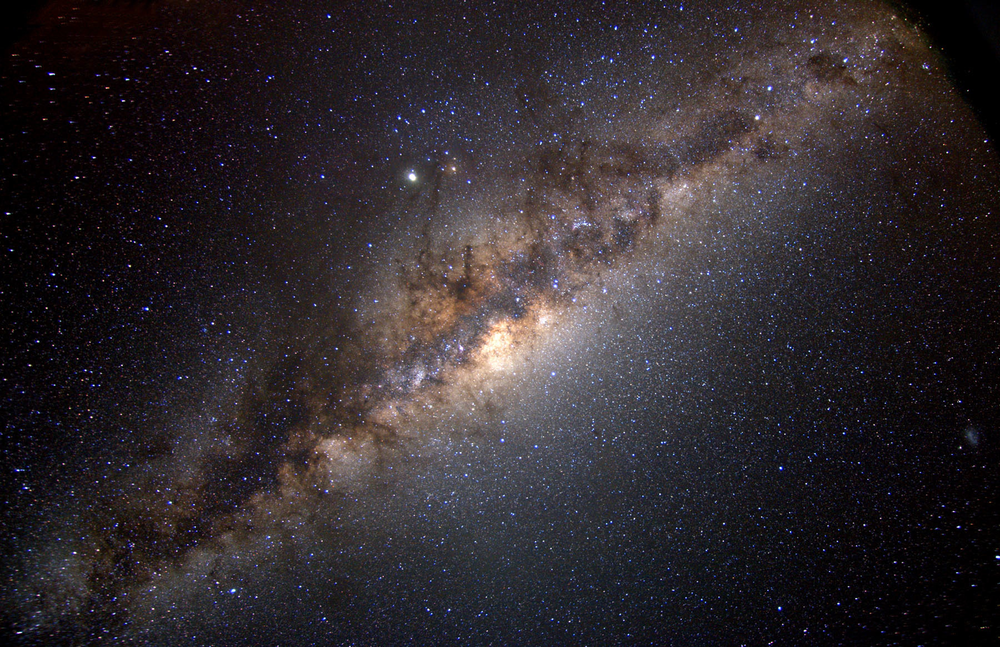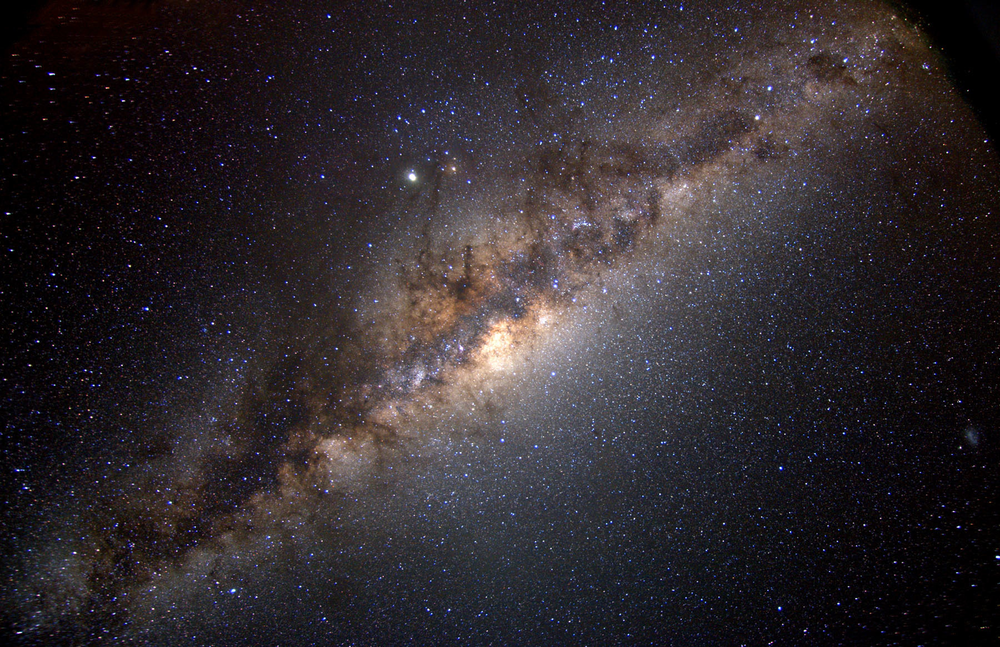Ancient Galactic Merger Impacted Star Formation in the Milky Way
Some 8 to 11 billion years ago, researchers believe the Milky Way absorbed a small dwarf galaxy, known as Gaia-Sausage-Enceladus, after the two collided. This absorption changed the structure of our Galaxy as well as its chemical makeup. The remnants of the dwarf galaxy also shaped the Milky Way’s outer halo and its centrally located “inner thick disk.” Now Ioana Ciucă of the Australian National University and her colleagues have analyzed data from nearly 70,000 stars to understand the role the merger played in subsequent stellar evolution within the inner thick disk [1]. The team finds that the stars that formed directly after the merger contain less metal than those that predate the merger. “For the first time, [we] identify a [merger-induced] drop in the metallicity from the ‘fossil record’ of the stars,” Ciucă says.
For their analysis, the researchers developed a machine-learning framework to estimate the ages of 68,360 red giant stars in the Milky Way’s disk. They input into the model data on the stars’ chemical makeups, which were collected by the APOGEE-2 spectroscopic survey. The team looked at red giants, Ciucă says, as this class of star is easier to date than others because they have strong carbon and nitrogen signals, both of which are typically used in the age dating process.
Analyzing their data, the researchers found that the stars that formed just after the merger had a lower metallicity—a parameter linked to the abundance of a star’s heavier elements—than those that formed just before. Yet the postmerger stars did contain more “alpha” elements, elements created when fusion in a star converts helium into heavier atoms, such as magnesium. In simulations, the team found that when it merged with the Milky Way, Gaia-Sausage-Enceladus brought with it a significant amount of lower-metallicity gas, diluting the concentration of heavy elements in the Milky Way’s gas reservoir. The simulations suggest that this gas influx induced a starburst event—a sudden increase in the rate of stellar formation. “These new stars formed very quickly,” Ciucă says.
“There’s evidence that a sudden dumping of a lot of fresh gas onto the Milky Way reset its star formation,” says Vasily Belokurov, a professor of astronomy at the University of Cambridge. Researchers knew that Gaia-Sausage-Enceladus had collided with the Milky Way and had brought with it some fresh gas, Belokurov continues. But until now the details of how that merger changed the chemical composition of our Galaxy and how it impacted the Milky Way’s evolution were quite blurry. With these results in hand, Belokurov would like to see researchers focus on understanding exactly how the gas from Gaia-Sausage-Enceladus mixed with that of the Milky Way, as well as on teasing out the details of how star formation proceeded just before and after the Galactic merger.
Ciucă says she plans to probe the impact of other merger events on the evolution of our Galaxy. She’d also like to compare the Milky Way with similar-sized galaxies that haven’t experienced a merger to better understand the effects of these events. “[Then] we can start using our knowledge about the Milky Way to also understand the evolution of other galaxies,” she says.
–Allison Gasparini
Allison Gasparini is a freelance science writer based in Santa Cruz, CA.
References
- I. Ciucă et al., “Chasing the impact of the Gaia-Sausage-Enceladus merger on the formation of the Milky Way thick disc,” Mon. Not. R. Astron. Soc.: Lett. (2023).





